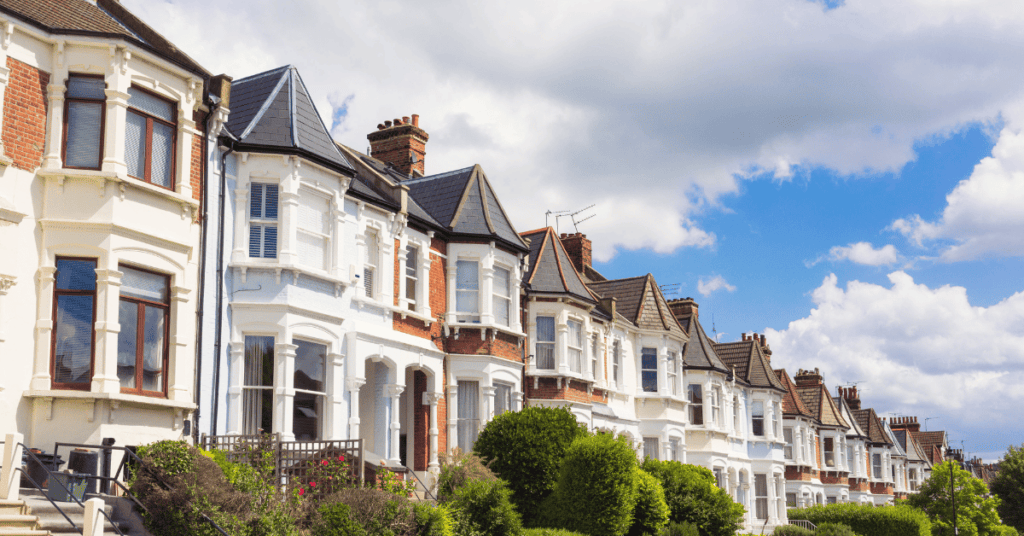Unlock Your Home Equity with Figure
- Approval in 5 minutes. Funding in as few as 5 days
- Borrow $20K-$400K
- Consolidate debt or finance home projects
- Fastest way to turn home equity into cash
- 100% online application
Both a bridge loan and HELOC can serve as short-term financing. But one may be better than the other depending on what you’re trying to accomplish.
Let see which one is better – bridge loan vs HELOC – for your situation.

Most people who are comparing these two loan types are trying to buy a new-to-them primary residence before selling their current one. They need funds for the down payment before selling. (If that’s not you, skip to Part 2.)
Home sellers are more likely to accept a non-contingent offer. This simply means you commit to buy the house whether or not your current home sells.
Too much can go wrong with the buyer’s home sale. Sellers don’t want that risk.
Both a bridge loan and a HELOC can help you tap into your current home’s equity for the down payment. Then, you can make a non-contingent offer. But which one you choose depends on your situation.
When your house is already listed for sale. Lenders won’t issue a HELOC on a home that’s currently listed, or one that was recently listed. That’s because they know you’ll pay it off when you sell. They won’t make any money on interest.
When you’re pretty sure you will sell your current home. Although people do it, it’s a bit unethical to use a HELOC for bridge financing when you plan to sell the home. Lenders often issue HELOCs with low or no closing costs, expecting to make money on interest. If you open a HELOC just to pay it off weeks or months later, the lender loses money. Bridge loans, though, have upfront fees and higher interest rates that ensure the lender can issue the loan profitably.
You might keep the home as a rental. Some buyers are on the fence about selling their home. Often, it makes more sense to keep it as a rental. In this case, it’s a good idea to get a HELOC. You don’t want to have a bridge loan that must be paid off in 6-12 months. Open a HELOC before you list the home for sale if renting the home is just a backup plan.
You’re not sure if the home will sell. The market is shifting, and it’s no longer a sure bet that a home will sell. If there’s a possibility you will be unable to sell the home, get a HELOC. Bridge loans come with short expiration dates and could be hard to refinance later. Remember: once your home is listed for sale or you’re no longer living there, you are likely not eligible for a HELOC to replace the bridge loan.

Make a contingent offer: This is the best-case scenario, and becoming a possibility as the real estate market softens. Sellers may not automatically reject a contingent offer as they did in 2020 and 2021. A contingent offer lets you back out of the purchase if you can’t sell your current home. And, it’s the cheapest option because you don’t have to borrow money for the down payment.
Cash-out refinance: If you plan to keep the home long-term, consider a cash-out refinance over a HELOC. A cash-out refinance gives you a low fixed rate, while a HELOC rate is variable. It may end up being cheaper if HELOC rates continue to rise.
Bridge loan: Short term financing that gives you a large chunk of money. Closing costs and interest rates are typically higher because they are only open for 6-12 months and the lender needs to make its money upfront, not over time.
HELOC: A line of credit taken out on a primary residence meant for longer-term financing. While you can use them to make a down payment on another home, issuing lenders expect the loans to be open for years, not months.
Bridge loan: These loans are the more expensive option. Expect to pay points and receive a rate at or above 10%. Remember that these loans are only meant to be open for a short time, so lenders make their money upfront. Plus, they come with significant risk for the lender, since there’s no guarantee you’ll be able to sell your current home.
HELOC: Many HELOCs are issued with zero closing costs, making these less expensive upfront. You’ll likely pay less in interest, too. HELOC rates are variable and based on the current prime rate (6.25% as of September 22, 2022). So a HELOC at prime + 0.75% would come with a rate of 7% today. Keep in mind, though that the rate is variable. If the Federal Reserve keeps raising rates, your rate will rise, too. (Prime rate is directly tied to the fed funds rate which the Federal Reserve controls.)
There’s another use for bridge loans and HELOCs: to secure an investment property or any big purchase where you need short-term financing.
Say there’s a property down the street that has good bones, but needs $100,000 in repairs. The home would bring in thousands per month as a rental, or you could fix and flip it.
You likely can’t get a traditional loan for something in such bad condition. So you have two options.
Investment property bridge loan: Open this short-term financing option that gives you enough funds to buy and fix up the property. When the home is in top shape, you can open a traditional loan to pay off the bridge. You end up with permanent financing with a relatively low rate. Or, you flip the home and pay off the bridge loan with sale proceeds.
A HELOC to purchase an investment property: If you had enough equity in your primary residence, you could take out a large HELOC to buy and fix up the property. Since the HELOC is attached to your home, the condition of the home you’re buying doesn’t matter. When repairs are complete, you refinance or sell the investment home to pay off the HELOC. The advantage to this method is likely lower costs, plus you can use and pay down the HELOC as many times as you wish. You could buy and refinance an unlimited number of investment properties, all with the same loan.
If you’ve already listed your home or you are sure you will sell it, a bridge loan is a good option. If there’s a chance you might keep the home, a HELOC is a better bet.
They can be. Bridge lenders must make more money upfront because these loans are meant to be paid off within 6-12 months. So paying points and high interest rates is common. Many HELOCs come with low or no closing costs and no upfront points. But lenders issue them assuming the borrower will hold them longer, so costs are more spread out.
Homebuyers who are also selling a home get a bridge loan or HELOC so they can make a non-contingent offer on a new home. This means they agree to buy the new home whether or not they sell their current home. A bridge loan or HELOC taps into the current home’s equity to provide the down payment on the new home.
Whether you’re replacing your primary residence or buying an investment property, a bridge loan or HELOC can give you the temporary funds you need to secure the property.
Still not sure about the correct course of action? Let an expert examine your scenario and see which one is best for you.

Our advice is based on experience in the mortgage industry and we are dedicated to helping you achieve your goal of owning a home. We may receive compensation from partner banks when you view mortgage rates listed on our website.

